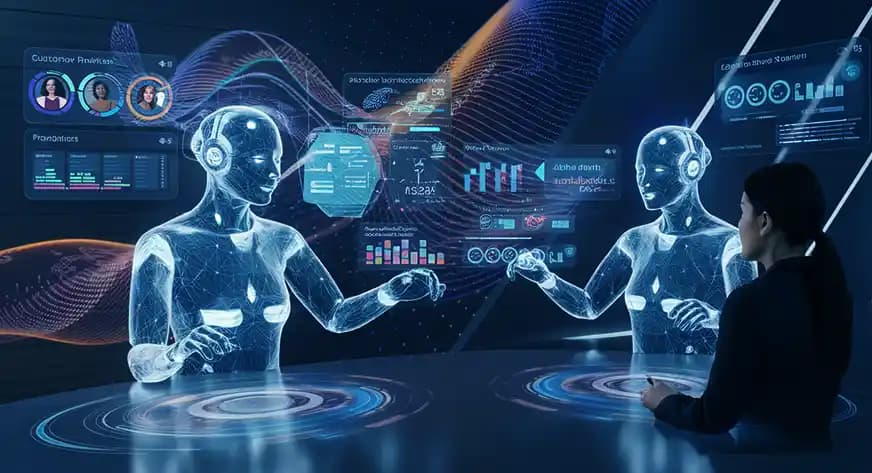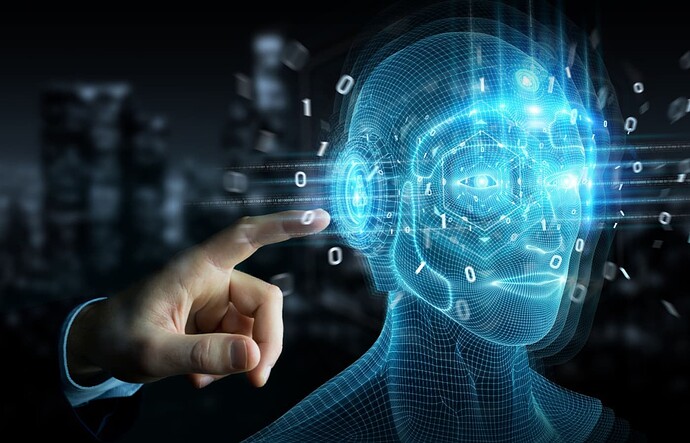The advent of artificial intelligence (AI) has ushered in a new era of software development, leading to the emergence of AI agents that differ significantly from traditional software. This comparison highlights the fundamental differences in functionality, performance, and user interaction between AI agents and traditional software systems. Understanding these distinctions provides valuable insights into how organizations can leverage each type of technology to meet their specific needs.
1. Definition and Scope
Before diving into the comparison, it is essential to clarify what constitutes traditional software and AI agents.
a. Traditional Software
Traditional software refers to applications designed to perform specific tasks based on predefined rules and algorithms. These software programs operate within a fixed framework, executing commands and processing data as instructed. Examples include word processors, spreadsheets, and database management systems. Traditional software typically requires explicit instructions from users to function effectively.
b. AI Agents
AI agents, on the other hand, are intelligent systems capable of autonomously performing tasks, learning from interactions, and adapting to new information. These agents utilize machine learning, natural language processing, and other AI technologies to analyze data, recognize patterns, and make decisions. AI agents can engage in conversations, provide recommendations, and automate complex processes without constant human intervention.
2. Functionality and Adaptability
One of the most significant differences between AI agents and traditional software lies in their functionality and adaptability.
a. Static vs. Dynamic Functionality
Traditional software operates within a static framework, constrained by predefined functionalities. Users must follow established procedures, and any deviation from these processes may lead to errors or inefficiencies. For example, a traditional spreadsheet application allows users to manipulate data but does not adapt to changes in user behavior or preferences.
In contrast, AI agents exhibit dynamic functionality. They can learn from user interactions and adapt their behavior based on historical data and contextual information. An AI-powered virtual assistant, for instance, can understand user preferences over time, tailoring its responses and recommendations accordingly. This adaptability enhances the overall user experience, making AI agents more intuitive and responsive.
b. Learning and Improvement
Traditional software typically requires manual updates and maintenance to improve functionality. Developers must identify and rectify issues through patches or new versions, which can be time-consuming and resource-intensive.
AI agents, however, possess the ability to learn and improve autonomously. Through machine learning algorithms, these agents analyze user interactions and feedback to enhance their performance continuously. For instance, a customer service AI can refine its responses based on previous interactions, resulting in faster and more accurate assistance. This ongoing learning process allows AI agents to evolve and adapt to new challenges without direct human intervention.
3. User Interaction and Experience
User interaction represents another critical area where AI agents and traditional software diverge.
a. User-Centric Design
Traditional software often relies on a user-centric design philosophy, focusing on usability and functionality. Users engage with the software through interfaces that guide them in completing specific tasks. While effective, this approach can sometimes lead to a rigid user experience, where users must conform to the software’s limitations.
AI agents prioritize a more conversational and intuitive approach to user interaction. With advancements in natural language processing, AI agents can engage users in dialogue, allowing for a more fluid and natural exchange of information. This conversational interface facilitates a more personalized experience, as users can express their needs and receive tailored responses.
b. Proactive vs. Reactive Interactions
Traditional software typically operates in a reactive manner. Users must initiate commands or queries for the software to respond. For example, in a traditional email application, users need to search for messages or create new ones actively.
Conversely, AI agents can engage in proactive interactions. They can analyze user behavior and context to anticipate needs, offering suggestions or assistance before users even realize they require it. For instance, a virtual assistant might remind a user of an upcoming meeting or suggest relevant articles based on previous reading habits. This proactive approach enhances user efficiency and satisfaction.
4. Data Handling and Analysis
The way data is handled and analyzed represents a fundamental distinction between AI agents and traditional software.
a. Structured vs. Unstructured Data
Traditional software primarily processes structured data, which is organized in predefined formats, such as tables or databases. This structured data is easy to analyze and manipulate but may not capture the full complexity of real-world information. For instance, a traditional CRM system relies on structured customer data to generate reports and insights.
AI agents, on the other hand, excel at handling both structured and unstructured data. They can analyze vast amounts of data from diverse sources, including text, images, and audio. This capability allows AI agents to extract insights from unstructured data that traditional software cannot process effectively. For example, an AI-powered sentiment analysis tool can analyze social media posts to gauge public opinion, providing insights that traditional analytics might miss.
b. Predictive Analytics
AI agents leverage predictive analytics to forecast future trends and behaviors based on historical data. By identifying patterns and correlations, these agents can offer valuable insights that inform decision-making. For instance, an AI agent in a marketing context can analyze customer behavior to predict which products are likely to resonate with specific demographics.
Traditional software typically lacks this predictive capability. While it can generate historical reports or dashboards, it does not possess the analytical depth to forecast future outcomes effectively. This limitation means that organizations using traditional software may miss opportunities for proactive decision-making based on emerging trends.
5. Automation and Efficiency
Both AI agents and traditional software aim to enhance efficiency, but they do so in different ways.
a. Routine Automation
Traditional software often automates routine tasks through macros or scripts. For instance, a spreadsheet application can automate calculations based on predefined formulas. While effective, this automation is limited to specific tasks and requires user intervention to set up.
AI agents, in contrast, can automate complex processes across various domains. They can learn from user behavior and adjust their actions accordingly, streamlining workflows without requiring constant oversight. For example, an AI agent in a customer service context can handle inquiries, escalate issues, and provide solutions autonomously, significantly reducing the workload for human agents.
b. Cross-Functional Integration
AI agents excel at integrating across multiple functions and systems. They can pull data from various sources, analyze it, and take action based on the insights gained. This cross-functional integration enhances overall efficiency by breaking down silos and facilitating collaboration between departments.
Traditional software, however, often operates within isolated environments. While some applications can integrate with others, they may require manual intervention to share data or communicate effectively. This limitation can lead to inefficiencies and increased operational complexity, hindering organizational performance.
6. Scalability and Deployment
The scalability and deployment of AI agents and traditional software differ significantly, impacting their effectiveness in various organizational contexts.
a. Scalability Challenges
Traditional software often faces scalability challenges as organizations grow. Increasing user demand may require additional resources, such as server capacity or software licenses, leading to higher costs and complexities in management. As a result, scaling traditional software can be a cumbersome process.
AI agents, however, are designed with scalability in mind. Their ability to learn and adapt allows organizations to deploy them across various functions and departments without significant reconfiguration. For example, a single AI agent can be adapted for use in customer service, sales, and marketing, providing consistent support across the organization.
b. Deployment Flexibility
Traditional software typically requires installation and configuration on individual devices or servers. This deployment method can be time-consuming and resource-intensive, particularly for large organizations with multiple users.
AI agents often offer greater deployment flexibility. Many AI solutions are cloud-based, allowing organizations to access them remotely without extensive installation processes. This cloud-based approach facilitates easier updates, maintenance, and scalability, enabling organizations to leverage the latest advancements without disruption.
7. Ethical Considerations and Accountability
As AI agents gain prominence, ethical considerations surrounding their use become increasingly important. The accountability of AI systems differs from that of traditional software, raising questions about responsibility and transparency.
a. Bias and Fairness
AI agents can inadvertently perpetuate biases present in the data they are trained on. This challenge raises ethical concerns regarding fairness and discrimination. Organizations must be vigilant in monitoring AI systems for bias, ensuring that they do not reinforce existing inequalities.
Traditional software typically operates on fixed rules and algorithms, reducing the risk of biased decision-making. However, the potential for human bias still exists in how data is input and interpreted. Organizations using traditional software must also prioritize fairness and transparency to prevent discriminatory practices.
b. Accountability
Determining accountability for AI agents can be complex. As these agents operate autonomously, it may be challenging to pinpoint responsibility for decisions made by the system. Organizations must establish clear guidelines for accountability, ensuring that human oversight is integrated into AI decision-making processes.
In contrast, traditional software typically has defined accountability structures, as human users actively control its operations. This clarity simplifies the process of identifying responsibility for errors or issues that may arise.
8. Future Trends and Implications
The future of AI agents and traditional software is likely to be shaped by ongoing advancements in technology, user expectations, and societal needs.
a. Integration of AI into Traditional Software
As AI technology continues to evolve, traditional software applications are increasingly incorporating AI capabilities. This integration enhances the functionality of existing software, allowing it to leverage the adaptive and learning features of AI agents. For example, traditional CRM systems may implement AI-driven insights to improve customer interactions.
b. Continued Growth of AI Adoption
The demand for AI agents is expected to grow as organizations recognize their potential to enhance efficiency and decision-making. Industries across the board will increasingly adopt AI agents to automate processes, analyze data, and improve user experiences. This growth will drive further innovation in AI technology, leading to more sophisticated and capable agents.
c. Emphasis on Ethical AI Development
As AI agents become more integrated into society, the emphasis on ethical AI development will intensify. Organizations will prioritize transparency, accountability, and fairness in AI systems to build trust among users. This focus will shape the future of AI technology, ensuring that it aligns with societal values and expectations.
Wrap Up
The comparison between AI agents and traditional software reveals fundamental differences in functionality, adaptability, user interaction, and more. While traditional software excels in providing structured solutions based on predefined rules, AI agents offer dynamic, adaptive, and intuitive capabilities that enhance user experiences and improve decision-making processes.
As organizations continue to navigate the evolving technological landscape, understanding the strengths and limitations of both AI agents and traditional software will be crucial. Embracing the potential of AI agents while leveraging the reliability of traditional software can create a balanced approach that maximizes efficiency, innovation, and user satisfaction.
The future of technology holds exciting possibilities, with AI agents poised to play a central role in shaping the way we work, communicate, and interact with the world around us. By fostering collaboration between AI and traditional software, organizations can unlock new opportunities for growth, creativity, and improved outcomes in an increasingly complex and interconnected world.



